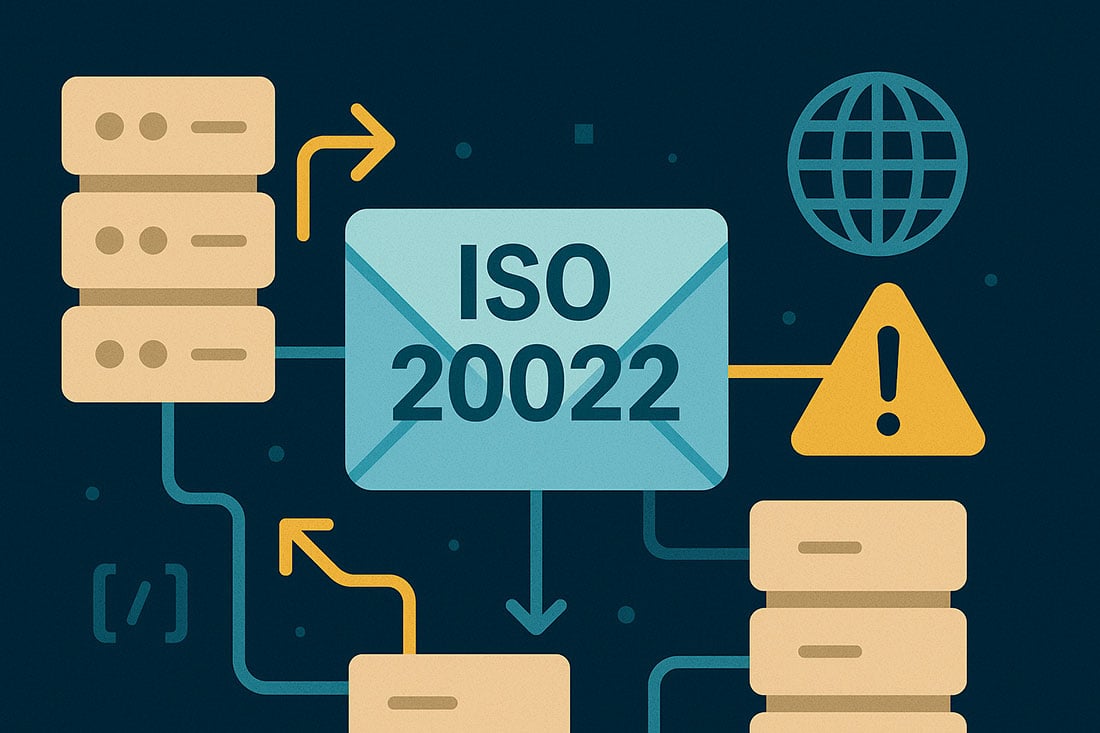The 2025 ISO 20022 release exposes major orchestration gaps across Market Infrastructures—demanding stronger coordination and early interoperability testing.
As 2025 unfolds, the financial industry finds itself at a critical juncture in the ISO 20022 migration. The shift toward richer, more structured messaging is well underway, but as Market Infrastructures (MIs), financial institutions, and vendors race to align with evolving standards like CBPR+, operational complexity and interoperability risks are mounting.
This year is particularly significant, not only due to the adoption of the 2025 ISO 20022 Standards Release, but also because coexistence with SWIFT MT formats ends. From 2026 onwards, cross-border traffic via CBPR will be ISO 20022-only, marking a full transition away from legacy formats. That milestone brings with it a domino effect: other MIs are increasingly aligning their own specifications with CBPR+, and many more will follow.
While this convergence is essential for standardisation, it also exposes a fundamental challenge: the lack of orchestration across MIs in how and when changes are adopted.
The Hybrid Address dilemma
One of the most disruptive changes introduced in the 2025 Standards Release is the Hybrid Postal Address, a Payments Market Practice Group (PMPG) proposal that resulted in change requests on CBPR+ and HVPS+ usage guidelines. This change requires the inclusion of structured address elements - specifically ‘Town Name’ and ‘Country’ - alongside optional unstructured fields. This model, also referenced in the HVPS+ guidelines, aims to improve data quality and facilitate more consistent cross-border processing.
Most MIs have updated their usage guidelines to support the hybrid address format, but implementations vary widely:
- Some MIs, like those in Europe, are fully adopting the CBPR+ rules - albeit on staggered timelines (e.g., TARGET2 deferring implementation to November 2025).
- Others, such as HK CHATS - Hong Kong’s real-time gross settlement (RTGS) system - are choosing more relaxed interpretations, reducing enforcement of structured fields. This creates a gap in data quality checks and introduces interoperability risks across cross-border and domestic flows.
- Domestic RTGS systems and many payment vendors are still not implementing hybrid address rules, adding friction where seamless integration is expected.
Cascading timelines and vendor overload
This phenomenon is particularly acute for vendors and service providers supporting multiple MIs. Instead of phased rollouts, the industry is witnessing simultaneous change waves, leaving little room for error and increasing operational strain.
What comes next: Annual standards releases and the testing gap
- Annual updates may ensure tighter alignment with evolving global needs but strain resources and readiness.
- Multi-year delays risk widening the gap between global and local implementations, increasing interoperability challenges and necessitating expensive interim fixes.
Toward better orchestration and shift-left testing
This is where “shift-left” testing becomes essential: embedding interoperability validation and conformance checks early in the specification design phase. By building testing and validation into the standards definition process, MIs can:
- Detect interoperability issues sooner
- Avoid disruptive downstream changes
- Ensure that participants and vendors have time to prepare properly
An urgent call for collective responsibility
The orchestration challenge cannot be solved by individual institutions alone. It requires industry-wide collaboration, proactive governance, and tooling that ensures specifications are interoperable before they’re implemented.




